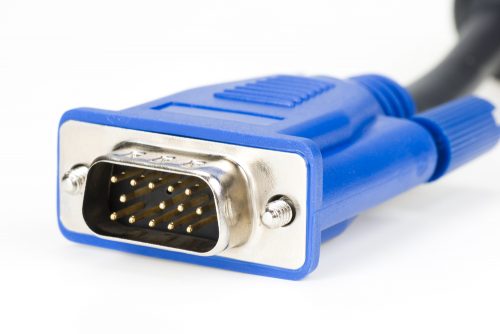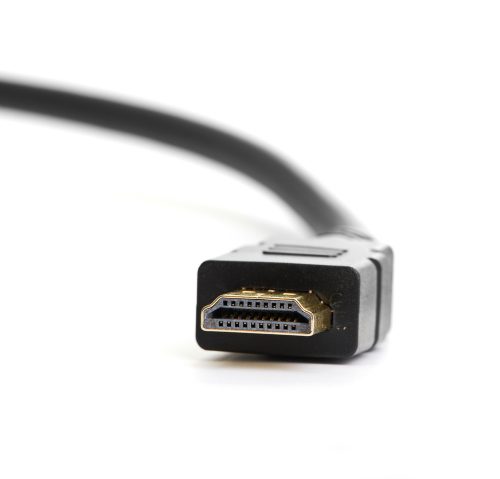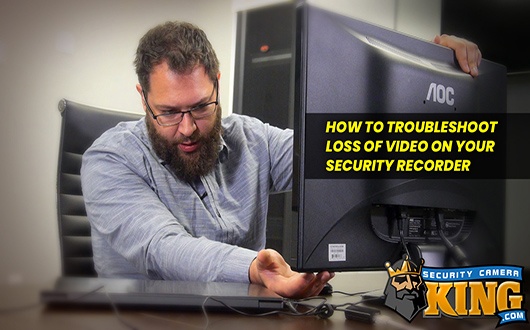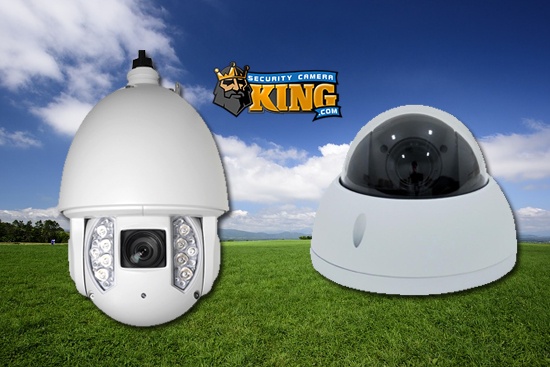Hi everyone, and thanks for joining us today as we show you how to How to troubleshoot local Video Loss on your Recorder. This is a troubleshooting guide for those who have a working recorder set up but have suddenly found they can not see the video on the local display. If you own one of our recorders and have found that the local monitor is not showing the video, follow the guide here. If you still have issues, our tech support number is at the bottom of the page. This article will be helpful regardless of whether your recorder is a DVR or NVR. Additionally, we have also included an accompanying video guide to help walk you through the steps to recovering display on the recorder’s local monitor. Watch the video alongside reading the article for the clearest idea of How to troubleshoot local video loss.
How to troubleshoot Video Loss on Recorder
Step 1: Is it even on?
Our first step in our Guide on How to Troubleshoot Local Video loss on your recorder, is to check if your recorder is even powered on. It’s pretty hard to get the display from a device not receiving power though, so if it is not on, make sure that the device is plugged firmly into a power source you know is working. This could be a wall outlet, but preferably should be some kind of surge protected power supply. You’ll want to check the power cable at both ends- the recorder and the outlet its plugged into. IF you still don’t get display on the local video source, and you can verify your recorder is on, move to step 2.
Step 2: What about the monitor, is that on?
Since we’ve already checked if the recorder is powered on- its time to do the same with the monitor. If it does not get power, perform similar steps as to the above. Verify the power cable is plugged in at the monitor firmly and at the power source. If the monitor is receiving power properly, and this is verified but you still have no display- move on to step 3.
Step 3: Is the Video Cable Plugged in?
So now we know for a fact the recorder, and the monitor are not suffering a loss of power. The next thing to check in our guide on How to troubleshoot video loss would be your video cable. This might be an HDMI cable, or it could be a VGA cable. See the images below to identify which video cable you have, and then ensure the cable is firmly connected to the monitor- as well as the proper video port on the back of the recorder. If you can confirm he cable connection is firm, but there is still no local video move on to step 4.
VGA cables, like the one below, have 15 pins, are wider, and have two thumbscrews on the male end of the cable to lock into place.

HDMI cables, like the one below, are flatter, smaller, and insert directly into the HDMI port with no screws.

Step 4: Did you try turning on and off again?
Since we know all the connections are solid, the next thing we should do is try rebooting the recorder. If there was some kind of error, restarting the recorder may clear the error out and restore the local display. Use the switch on the back of the recorder to power it down, count to 10, then power it back on again. Give the recorder a good 5 minutes to fully boot up and determine if the video comes back to the local display. If there is still a lack of video, then its time to proceed then to step 5.
Step 5: Test the Monitor, and its cable, on another device.
It’s possible that the monitor, or even the video cable itself, or both in a really unlucky world have gone bad or failed. To eliminate this possibility you will need to take them and test them on another device, such as a computer like we use in the video, or another recorder that is currently functioning, and has the same video connection you are using. If you find that the monitor display’s properly from the test device, you can eliminate this possibility and we know the issue then lies at the recorder. If the monitor does NOT display data, your next step is to test another cable int his same configuration. If it still fails it is time to get a new monitor (and we suggest a new cable too), and try these steps again with the recorder. If you did get video, reconnect the monitor to the recorder and move on to the last step, step 6.
Step 6: Check Resolution from The Web Interface.
If all else has failed, its possible that the recorder is internally set to a higher resolution than the monitor you are using can handle. The best way to resolve this will require that you have a PC on-site, connected to the same physical network as the recorder. It could also work if you have remote access to the recorder over the web interface, as long as you are able to log in. If you do not know how to perform this, check out the link right below to our video on accessing the web interface of your recorder using internet explorer, article Coming Soon as well.
–HOW TO ACCESS RECORDER VIA INTERNET EXPLORER-
Once you have the recorder pulled up in Internet Explorer, navigate to the second page using the button at the bottom and then click “display”. From here make sure that your resolution is set to what your monitor can handle:
- HD or 720p – 1280 x 720
- FHD or 1080p – 1920 x 1080
- 4K or 2160p – 3840 x 2160
Click Apply, and then the recorder may have to reboot. At this point and time, these are all the steps involved in how to troubleshoot local Video Loss on your Recorder. We hope that this resolved your problem, but if it did not please feel free to contact our Technical Support. Our Tech support is free to customers of our products, that number is 561-288-5258. Also feel free to give us a call if you are interested in any of our products, or have other questions. If you enjoyed the video or found it helpful, toss us alike, and don’t forget to subscribe for more content. Until next time, stay safe!
Related Media: Remote Viewing of CCTV Part 1 – P2P and CCTV Remote Viewing Part 2 – Port Forwarding
Find Us On: Facebook | Twitter | YouTube












